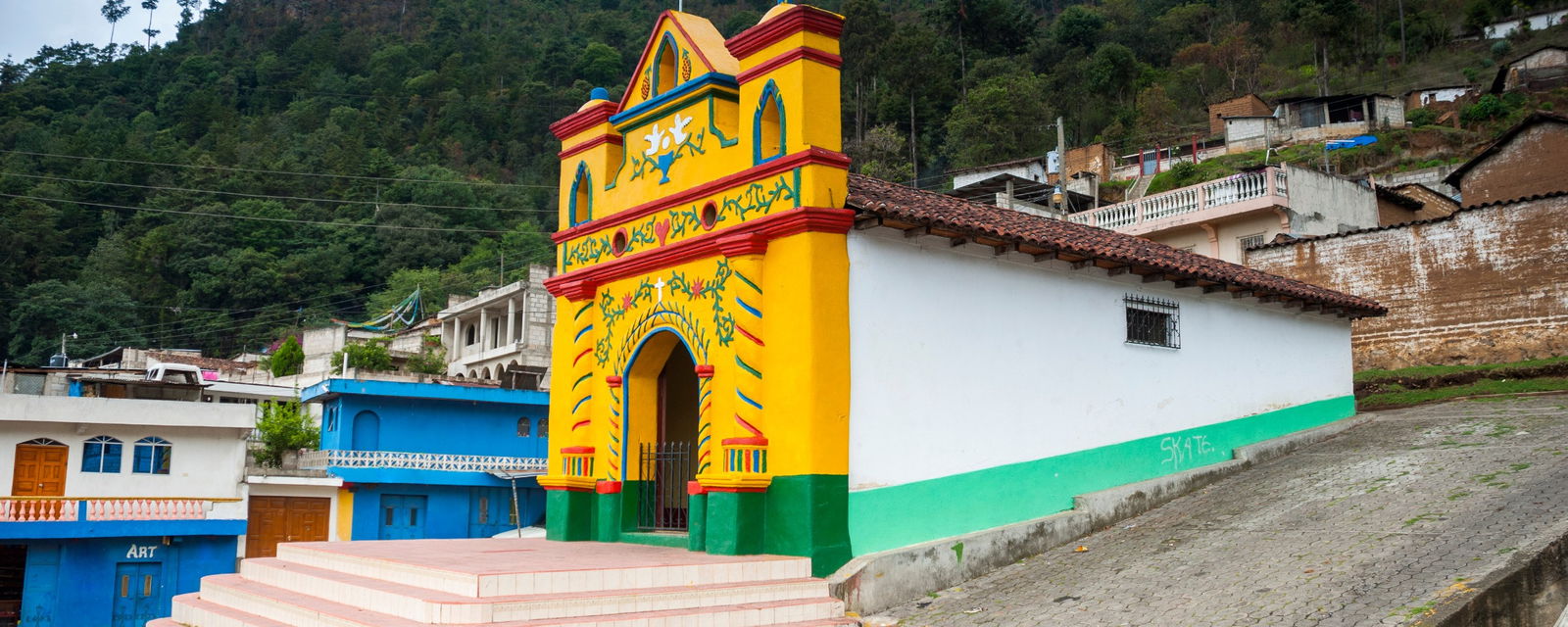


With a heavy Mayan influence, Quiche is a populous city that offers an extraordinary amount of authentic culture and flavor. Santa Cruz, the capital of the Quiche department, is really the main hub of activity and tourism here. Among the big attractions: The giant market in the town of Chichicastenango; on Thursdays and Sundays hundreds flock here to get just about anything and everything particularly locally made handicraft items that bespeak the true spirit of the region.
While a cemetery may not seem like the ideal destination to visit, this one is something to behold. There’s nothing quite like it when it comes to honoring those who passed. The graves are marked by brightly colored miniature churches, crosses and other such structures. From afar it looks like a tiny city of blue, yellow, red and pink.
The indigenous cultures and Quiche people celebrate their heritage and their past in this week of parades, song and dance. It ends with the Convite Femenino where the town’s women dress in elaborate masks and costumes and dance to traditional marimba.
Just north of Quiche you will find K’umarcaaj which was at one time the capital of the Quiche empire. There are ruins and remains of some 80 structures here; with a partially restored temple once thought to have been used for human sacrifices.

Quiché's winter, from December to February, offers pleasant weather with temperatures ranging from the mid-50s to low 70s Fahrenheit. It's an ideal time to visit this highland department as it allows for comfortable exploration of its diverse landscapes and indigenous culture. Winter is perfect for visiting Chichicastenango, known for its vibrant and colorful market. Visitors can browse through a wide array of handicrafts, textiles, and traditional Mayan products.

Spring in Quiché, from March to May, brings slightly warmer temperatures with highs in the 60s to mid-70s Fahrenheit. The landscapes remain lush and green from the previous rainy season. Spring is ideal for exploring the remote Cunén and Nebaj regions, where visitors can immerse themselves in the traditional Mayan way of life. The region is dotted with picturesque villages, surrounded by mountains and farmlands.

Quiché's summer, from June to August, marks the beginning of the rainy season. While it can be chilly and humid with temperatures in the 50s to low 70s Fahrenheit, it also provides a refreshing respite from the dry season. Summer offers opportunities for hiking in the Cuchumatanes, the highest non-volcanic mountain range in Central America. Visitors can enjoy breathtaking views of the surrounding valleys and lakes from the mountain peaks.

Fall in Quiché, from September to November, is the peak of the rainy season. The weather remains cool, with temperatures ranging from the mid-50s to low 70s Fahrenheit. Despite the rains, fall is an excellent time to experience the region's rich indigenous traditions and participate in local festivities. Visitors can witness traditional Mayan ceremonies and celebrations in various villages, where colorful processions and dances take place. Fall is also an ideal time to explore the ancient Mayan city of Iximche, an archaeological site with well-preserved pyramids and structures.